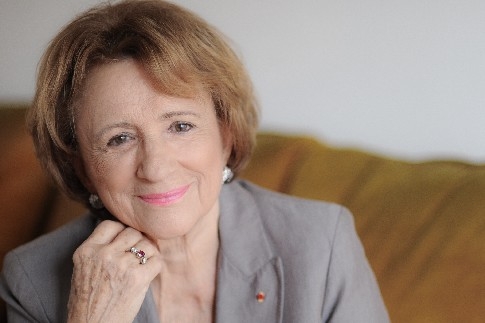FEBS Prakash Datta Lecture
Wednesday 3 September
11:45-12:30, Grand Auditorium
 |
The Neural Crest, a source of stem cells, its role in the development and evolution of Vertebrates I have been working, with my colleagues, for many years, on an embryonic structure of Vertebrates , the Neural Crest (NC). When I started it was a subject that had been neglected for about two decades. The investigations carried out in the first half of the XXth century had concerned essentially lower Vertebrates (fishes and Amphibians) and little was known on the participation of the NC in Amniotes. In 1969, I devised a cell marking technique, applicable to the avian embryo, which consisted in the construction of chimeric embryos in ovo between two species of birds, the quail and the japanese quail whose cells can be ealily distinguished by the structure of their interphase nucleus. After several years of work using this technique, carried out in my and others’ laboratories, it appeared that this discrete group of embryonic cells, endowed with remarkable migratory and invasive properties, is playing a major role in the development and the evolution of this group of animals; a role that had been, for long, largely unsuspected : the Neural crest is at the origin of the construction of most of the vertebrate head and, as we have just found, it exerts a strong influence on the development of their brain . These results have led to confer an important role to the NC in the evolution of the Vertebrate phylum. The investigations on this transitory embryonic structure have shown that it gives rise to a large number of derivatives and differentiated cell types. By using in vitro cultures of single NC cells (NCC), we have shown that, in their large majority, they are multipotent and endowed of self renewal capacities at the onset of their dispersion within the embryonic body and can therefore be considered as neural crest stem cells (NCSC). The permanence of NCSC in the adult organism has recently been demonstrated by several authors and raises the problem of their roles at this stage of life.Biography After Nicole Le Douarin got the degree of Agrégée de l’Université en Sciences Naturelles in 1954, Nicole Le Douarin became a secondary school (Lycée) teacher, a position she held up to 1960. She started her research carrier in 1958 and was going to the laboratory during the free time left by her teaching duties. This situation lasted for two years, until she obtained a full time position at the CNRS (Centre National de la Recherche Scientifique) in 1960. Her research carrier started under the sponsorship of Pr. Etienne Wolff who was the Director of the Institut d’Embryologie et de Tératologie expérimentales du Centre National de la Recherche Scientifique et du Collège de France in Nogent-sur-Marne. She submitted a thesis for the « Doctorat d’Etat » in 1964. Her thesis was entitled "Etude expérimentale de l'organogenèse du tube digestif et du foie chez l'embryon de Poulet". She was appointed as Maître de Conférences (i.e. Assistant Professor) first in the Faculté des Sciences of Clermont-Ferrand in 1965-1966, then in the Faculté des Sciences of Nantes, where she became Professor in 1971. She was responsible for teaching Developmental Biology and had the opportunity of setting up a Developmental Biology research unit with the support of the CNRS. In 1975, when Prof. Etienne Wolff retired, she was invited to take over the Directorship of the Institut d'Embryologie du Collège de France et du CNRS at Nogent-sur-Marne. She was appointed as Professor at the Collège de France in the Chair of "Embryologie cellulaire et moléculaire" in 1988, a position she occupied until September 2000 when she reached the compulsory retirement age. She has been elected as the “Secrétaire Perpétuelle” of the Académie des Sciences de l’Institut de France She continues to do research at the Institut de la Vision in Paris. She was elected as a member of the French Académie des Sciences in 1982, of the American Academy of Arts and Sciences in 1984, of the National Academy of the United States America in 1989, of the Royal Society of the United Kingdom in 1990 and of the Institute of Medicine of the NAS in 2003. She is also member of the following Academies: Academia Europea, Société Royale des Sciences de Liège, royal College of Pathologists of London, Council of the Pontifical Academy of Sciences, Vatican, Brazilian Academy of Sciences, Academy of Medical Sciences of the United Kingdom, Académie des Sciences, des Arts et des Lettres d’Athènes. She received several prizes including the Kyoto Prize in Advanced Technology in 1986, the Gold Medal of the CNRS in 1986, the Jeantet Price for Medicine in 1990, the Luisa Gross Horwitz Price of Columbia University in New York in 1993, the Grand Prix de la Fondation pour la Rercherche Médicale Française in 1999, the Grand Prix Mondial Cino del Duca in 2003, the Pearl Meister Greengard Prize (The Rockefeller University, New York) in 2004, the Edwin Conklin Award of The American Society for Developmental Biology (San Francisco) in 2005, Ralph W. Gerard Prize of Neuroscience (Society for Neuroscience, USA) in 2007 and Prix d’honneur de l’INSERM (Frane) in 2009. She is Grand Croix de l’Ordre National du Mérite and Grand Croix de la Légion d’Honneur. |
||
|
|
|||





